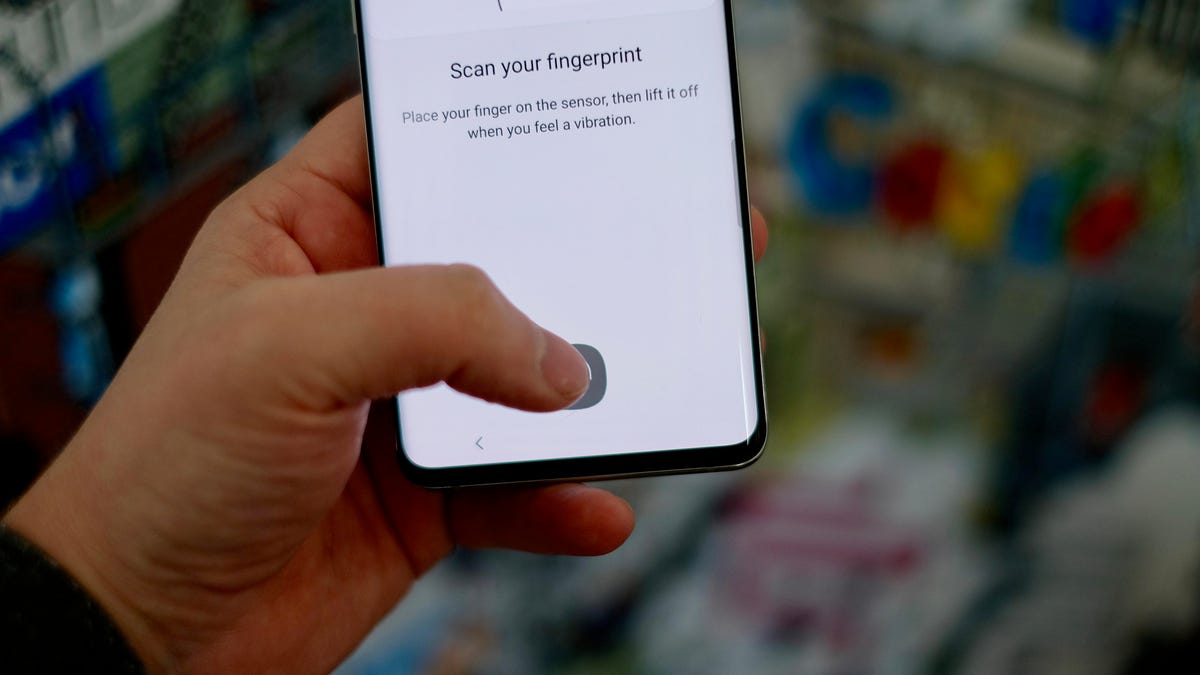In-screen fingerprint readers could soon be in a lot more phones
Qualcomm partners with BOE, one of the world's biggest display makers, to put its 3D Sonic Sensor onto the Chinese company's flexible OLED displays.

Devices like Samsung's Galaxy S lineup have an in-screen fingerprint reader that uses Qualcomm's technology.
In-screen ultrasonic fingerprint readers could soon be coming to a lot more phones. Qualcomm on Tuesday said it has partnered with BOE to bring the chip maker's in-screen fingerprint sensor technology to BOE's displays. The two plan to "develop innovative display products featuring Qualcomm 3D Sonic ultrasonic fingerprint sensors."
BOE is the world's second largest smartphone OLED display maker after Samsung. The Chinese company's panels have been used in foldable phones like Huawei's Mate XS and Motorola's Razr, as well as devices from Oppo, Nubia and various other handset makers.
By partnering with BOE, Qualcomm immediately gets a bigger customer base for its in-screen fingerprint sensor technology -- and it gets a big partner in the key Chinese market. The collaboration will also make it easier and faster for handset companies to use the technology in their foldables. So far, only Samsung has released phones that use Qualcomm's 3D fingerprint sensor.
Qualcomm and BOE said the partnership won't just include phones but will also extend to XR (a combination of virtual reality and augmented reality) and smart home devices.
"Based on the collaboration, BOE will offer integrated displays with Qualcomm 3D Sonic fingerprint sensors to its customers," the companies said. They expect devices using the technology to go one sale in the second half of 2020.
As phones get slimmer and sleeker, companies have been looking for ways to cram a bigger screen into a smaller package without carving out space for a fingerprint sensor. Apple has relied on its Face ID to unlock its latest devices instead of a physical fingerprint reader, while other companies have used things like iris sensors or fingerprint sensors on the back or sides of devices. Some have explored ways to put a fingerprint sensor underneath the front display itself.
A shaky start
In 2018, Qualcomm introduced its fingerprint sensor that used sound waves to map the ridges on your finger and unlock your phone. It declared it to be faster and more secure than face unlock technology from companies like Samsung and other fingerprint technology that uses optical sensors to essentially take a photo of a user's fingerprints.
Samsung jumped on board with Qualcomm's 3D Sonic Sensor and introduced it in last year's Galaxy S10 and Galaxy Note 10 lineups. It removed the fingerprint reader it had placed on the back of its devices and also ditched its iris scanner in favor of Qualcomm's technology. The ultrasonic fingerprint reader sat underneath the display, letting Samsung stretch the screens across the entire front of its devices.
The only problem was the 3D Sonic Sensor didn't quite live up to its promise. Tech reviewers complained about the slow unlock speeds and difficulty they faced placing their finger on the exact right spot. Then in October, a British woman discovered a flaw that let anyone's fingerprint unlock a Galaxy S10 smartphone. All she needed was a $3 silicone screen protector. Samsung and Qualcomm worked together to issue a software update to patch that vulnerability.
Qualcomm two months later introduced a new version of its fingerprint sensor, called the 3D Sonic Max. The 3D Sonic Max's fingerprint recognition area is 17 times larger than its predecessor, which means a user doesn't have to precisely place their finger over the small sensor to unlock a phone. And handset makers can implement authentication that requires two fingers, something that makes a device more secure. While the sensor is bigger, it's not faster than its predecessor, which has long been a complaint of in-screen fingerprint readers.
Samsung's Galaxy S20 lineup, which hit the market in March, uses Qualcomm's fingerprint sensor technology.

